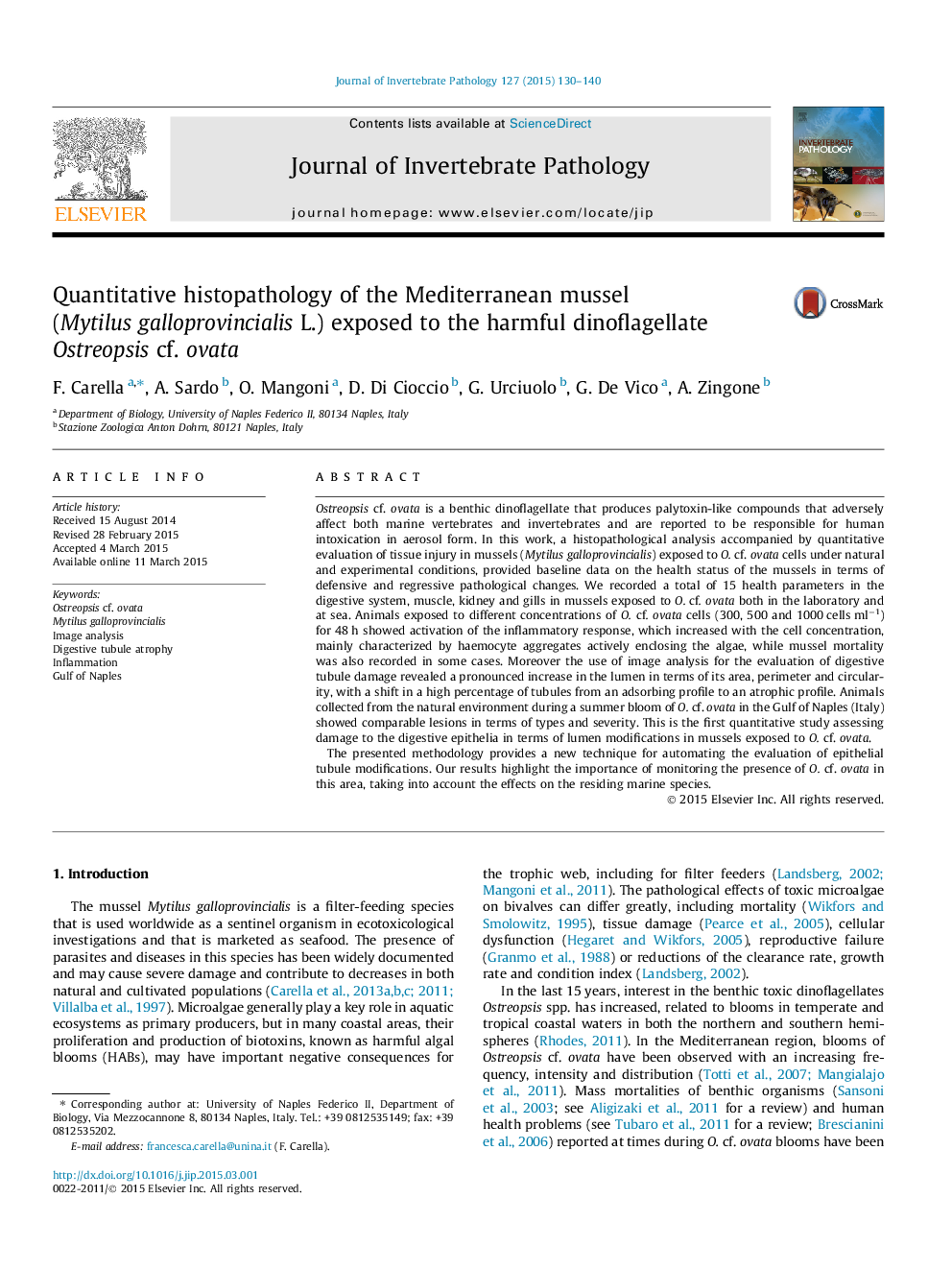| Article ID | Journal | Published Year | Pages | File Type |
|---|---|---|---|---|
| 4557649 | Journal of Invertebrate Pathology | 2015 | 11 Pages |
•We evaluated the health status of mussel exposed to O. cf. ovata in wild and experimental conditions.•We quantitatively assessed tissue injury such as regressive changes and inflammatory lesions.•Lumina of tubules increased in terms of area and circularity indicating atrophic epithelia.•The inflammatory response increased along with algal concentration.•The proposed methodology could be a useful tool to estimates the health status of bivalves.
Ostreopsis cf. ovata is a benthic dinoflagellate that produces palytoxin-like compounds that adversely affect both marine vertebrates and invertebrates and are reported to be responsible for human intoxication in aerosol form. In this work, a histopathological analysis accompanied by quantitative evaluation of tissue injury in mussels (Mytilus galloprovincialis) exposed to O. cf. ovata cells under natural and experimental conditions, provided baseline data on the health status of the mussels in terms of defensive and regressive pathological changes. We recorded a total of 15 health parameters in the digestive system, muscle, kidney and gills in mussels exposed to O. cf. ovata both in the laboratory and at sea. Animals exposed to different concentrations of O. cf. ovata cells (300, 500 and 1000 cells ml−1) for 48 h showed activation of the inflammatory response, which increased with the cell concentration, mainly characterized by haemocyte aggregates actively enclosing the algae, while mussel mortality was also recorded in some cases. Moreover the use of image analysis for the evaluation of digestive tubule damage revealed a pronounced increase in the lumen in terms of its area, perimeter and circularity, with a shift in a high percentage of tubules from an adsorbing profile to an atrophic profile. Animals collected from the natural environment during a summer bloom of O. cf. ovata in the Gulf of Naples (Italy) showed comparable lesions in terms of types and severity. This is the first quantitative study assessing damage to the digestive epithelia in terms of lumen modifications in mussels exposed to O. cf. ovata.The presented methodology provides a new technique for automating the evaluation of epithelial tubule modifications. Our results highlight the importance of monitoring the presence of O. cf. ovata in this area, taking into account the effects on the residing marine species.
Graphical abstractFigure optionsDownload full-size imageDownload as PowerPoint slide
